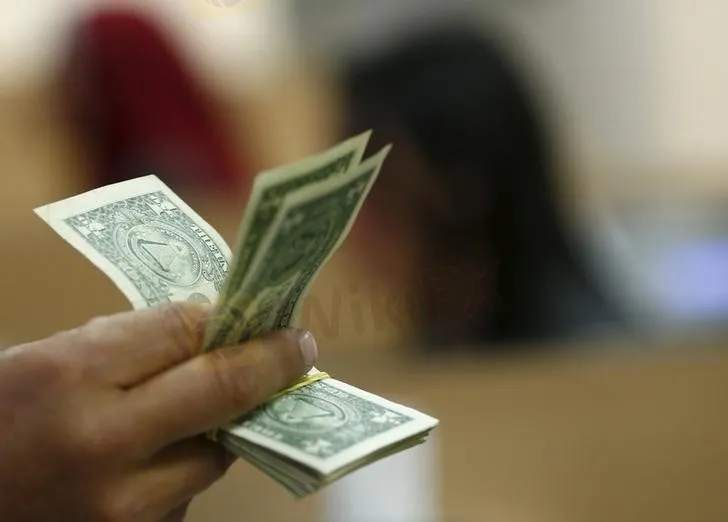简体中文
繁體中文
English
Pусский
日本語
ภาษาไทย
Tiếng Việt
Bahasa Indonesia
Español
हिन्दी
Filippiiniläinen
Français
Deutsch
Português
Türkçe
한국어
العربية
Dollar Up, Yen at One-Month Low as Omicron Worries Lessen
Abstract:The dollar was up on Tuesday morning in Asia. Meanwhile, the yen traded near a one-month low to the U.S. currency as uncertainty about the omicron COVID-19 variant was largely consigned to the background, and investors’ risk appetite improved.

The dollar was up on Tuesday morning in Asia. Meanwhile, the yen traded near a one-month low to the U.S. currency as uncertainty about the omicron COVID-19 variant was largely consigned to the background, and investors risk appetite improved.
The U.S. Dollar Index that tracks the greenback against a basket of other currencies inched up 0.02% to 96.110 by 10:15 PM ET (3:15 AM GMT).
The USD/JPY pair inched up 0.06% to 114.90, with the yen falling as far as 114.935 against the dollar for the first time since Nov. 26 and approaching the year-to-date low of 115.525 hit on Nov. 24.
Data released earlier in the day in Japan also said that industrial production grew a better-than-expected 7.2% month-on-month in November. It also said that the jobs/application ratio was 1.15, while the unemployment rate was 2.8%, in November.
The AUD/USD pair inched down 0.01% to 0.7234, with the riskier Australian dollar inching up back towards the three-week high it hit on Friday. The NZD/USD pair inched down 0.01% to 0.6807, with New Zealand and Australian markets closed for a holiday.
The USD/CNY pair inched up 0.03% to 6.3722, with the Peoples Bank of China reiterating on Monday that the yuan exchange rate will be more flexible in 2022 and will remain stable overall at a reasonable and balanced level.
The GBP/USD pair inched down 0.06% to 1.3429.
U.S. shares were on an upward trend, with the S&P 500 closing at a record high on Monday. The safe-haven U.S. dollar remained near toward the bottom end of its recent trading range, even as a hawkish tilt by the U.S. Federal Reserve at its latest policy meeting earlier in the month.
“Markets globally are optimistic” that omicron won't derail an economic recovery, denting demand for haven currencies, predominantly the yen, Citigroup (NYSE:C) Global Markets Japan head of G10 FX strategy Osamu Takashima told Reuters.
The U.S. equities rally “implies that currently investor risk appetite must be very, very strong” despite expectations for faster Fed tightening, he added, predicting that the yen is likely to test its 2021 low in the near term.
Disclaimer:
The views in this article only represent the author's personal views, and do not constitute investment advice on this platform. This platform does not guarantee the accuracy, completeness and timeliness of the information in the article, and will not be liable for any loss caused by the use of or reliance on the information in the article.
Read more

Wall Street Dip on AI Jitters
The U.S. equity market experienced one of its worst trading days this year, with the Nasdaq leading the decline, plunging more than 700 points in the last session. Investor concerns over the AI sector surged following Tesla's earnings miss and Google's higher-than-expected spending, both of which saw sharp declines.

Global Economic and Political Events Shaping Markets - Part 2
This article continues to explore significant global political and economic developments impacting markets. Key events such as the Democratic National Committee's nomination plans, Japan's political instability, and trade tensions in China influence major currencies and stock indices globally.

Global Economic and Political Events Shaping Markets
This article explores significant global political and economic developments impacting markets. From the US Supreme Court ruling on Trump's immunity to China's production excess and geopolitical tensions in the Middle East, these events influence major currencies and stock indices worldwide.

Dollar Calm ahead of FOMC Minutes
The dollar index steadied in the last session, trading above the $105 mark, ahead of the highly anticipated FOMC meeting minutes. Market expectations are leaning towards a more hawkish stance from the U.S. central bank due to a tight labour market. Analysts predict that the Fed is likely to implement two 25 bps rate cuts toward the end of the year, contingent on further evidence that inflation is slowing.
WikiFX Broker
Latest News
Elderly Trader Loses RM2.1M in WhatsApp Forex Scam
Spotware Unveils cTrader Store, Global Marketplace for Algo Creators
Gigamax Scam: Tracking Key Suspects in RM7 Million Crypto Fraud
WikiFX Review: Is IQ Option trustworthy?
CFI Partners with MI Cape Town, Cricket Team
Doo Financial Expands Reach with Indonesian Regulatory Licenses
5 Questions to Ask Yourself Before Taking a Trade
Quadcode Markets: Trustworthy or Risky?
Avoid Fake Websites of CPT Markets
Webull Canada Expands Options Trading to TFSAs and RRSPs
Currency Calculator


